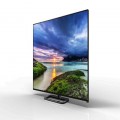 2014-01-07
2014-01-07
VIZIO announced its all-new P-Series Ultra HD Full-Array LED Smart TV collection. Offering the essentials for the most complete Ultra HD solution, P-Series is the culmination of advanced picture quality, powerful performance and a beautifully simple Ultra HD experience, delivering on the features consumers seek most.
Continue reading →
2014-01-06
Belkin is taking advantage of the wave of growing interest for smart lighting by introducing their LED lighting Starter Set. WeMo was first introduced at last year’s CES and is now available for purchase at US $129, much lower their their smart lighting competitors such as Philips Hue.
Continue reading →
2014-01-06
The FT833 is a High Precision Primary Side Feedback and Regulation Driver for LED Lighting Applications. The Integrated 650V Power MOSFET eliminates the need for a secondary sense and Feedback Circuit.
Continue reading →
2014-01-03
Tech Armor introduces a groundbreaking line of RetinaShield Blue Light Filter screen protectors. The newly developed RetinaShield Blue Light screen protector safeguards consumers’ eyes against damaging blue light released from LED screens.
Continue reading →
2014-01-02
The National Lighting Bureau’s Board of Directors give an interview on topics including the role of market channels, the role of education, photopic/scotopic effect, perception of brightness and more.
Continue reading →
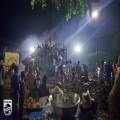 2014-01-02
2014-01-02
For most of us, light isn’t a luxury. It’s a basic need that, with the exception of planned power outages or a blown fuse, is very rarely unavailable. At the flick of a switch, light illuminates our offices, classrooms, hospitals and homes, enabling us to carry out essential everyday tasks without worry. We dictate its start, intensity and end; we’re in control.
Continue reading →
 2014-01-02
2014-01-02
Strawberry lovers will rejoice as strawberry fields can now yield fruit all season round. Starting this year, strawberry fields will be bursting with fruit all four seasons in Briton with the use of LED lighting technology.
Continue reading →
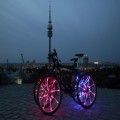 2013-12-31
2013-12-31
Radlicht has designed a unique way to keep bikers visible at night with an eye-catching LED light design. Based in Boston and Germany, the company had already exceeded their intended goal with 17 days left to go in their Kickstarter campaign.
Continue reading →
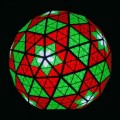 2013-12-31
2013-12-31
When the glittering Times Square New Year's Eve Ball descends to mark the beginning of 2014, the "1" and "4" will be illuminated for the first time in ever- changing colors using 207 of the revolutionary and programmable hue bulbs from Philips. A global TV audience of over one billion viewers will see the LED bulbs, with more than 16 million color options each, colorfully ring in the new year as people tune in for the iconic celebration.
Continue reading →
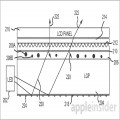 2013-12-25
2013-12-25
Apple has filed for a new patent with the U.S. Patent and Trademark Office entitled “Quantum dot-enhanced display having diachronic filter” for enhancement of color accuracy in displays. This patent shows the company’s eagerness in researching next-generation screen technology to keep their products on the cutting edge.
Continue reading →
2013-12-24
LIFX created a Wi-Fi enabled, multi-color, energy efficient LED light bulb that you can control with a smartphone. LIFX gives you a completely one-of-a-kind experience with your lights, up to 16+ million color options at your fingertips.
Continue reading →
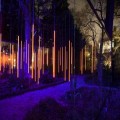 2013-12-23
2013-12-23
With the start of the Illuminade walking route, Amsterdam Light Festival 2013/2014 is now complete. Enjoy the many light artworks along this special walking route in the historic Plantagebuurt.
Continue reading →
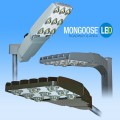 2013-12-23
2013-12-23
Acuity Brands, Inc. introduces technologically advanced Mongoose® LED Roadway and Area Lighting luminaires from Holophane® . The new LED luminaires significantly reduce energy and maintenance costs while providing a bright white light for improved visibility. The fixtures, named a 2013 IES Progress Report Selection, reduce energy expenses and CO2 emissions by up to 60 percent, and maintenance costs by more than 50 percent for new and retrofit applications.
Continue reading →
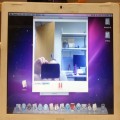 2013-12-20
2013-12-20
New research by two John Hopkins University students showed older Apple Mac’s cameras, iSight, can be hacked to covertly monitor users.
Continue reading →
 2013-12-20
2013-12-20
The GER MOOD SWEATER interprets emotions and displays mood instantly as an interactive light display.
Continue reading →
2013-12-20
Supertex, manufacturer in high voltage analog and mixed signal integrated circuits (ICs), introduced PS30, a constant frequency (67kHz), constant duty cycle LED driver optimized for dimmable off-line LED bulb/tube applications, providing high power factor correction (PFC). PS30 is intended to drive a single switch, single inductor power converter (flyback for isolated version and buck-boost for non-isolated version) directly from AC line, 110V or 220V, for power levels up to 20W. PS30DB1 demo board provides a 6.3W design solution, achieving 93% PFC and greater than 81% efficiency with +/-4% current accuracy. It can be modified for other power levels up to 20W.
Continue reading →
2013-12-20
Diodes Incorporated, global manufacturer and supplier of high-quality application specific standard products within the broad discrete, logic and analog semiconductor markets, today introduced the AP1694, an AC-DC controller providing a universal high-performance driver solution for a variety of mains-dimmable LED lamp designs. Suitable for both 120V and 230V AC inputs, while supporting non-isolated buck, buck-boost and isolated flyback topologies, this part enables between 10% and 50% reductions in total BOM costs.
Continue reading →
2013-12-19
The SmartCharge light bulb is the first of its kind. The bulb does not rely on grid power to light up, allow it to remain lit even during a power outage. With the use of the patent pending Grid & Switch Sensor technology, the bulb can be controlled through wall and lamp switches like a normal light bulb but can be turned on even without power.
Continue reading →
2013-12-19
OSRAM SYLVANIA is introducing the OSRAM PrevaLED® CUBE LED light engine, which is ideal for use in downlight fixtures. The PrevaLED CUBE provides fixture manufacturers a flexible, cost-effective light engine that delivers high-quality illumination and industry-leading system efficacy for their customers.
Continue reading →
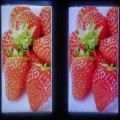 2013-12-18
2013-12-18
Sharp Corp. has developed a LED device for backlight in LCD panels and expanded color gamut by 25% without lowering the screen’s brightness, according to a Tech-On article. Using the LED device, the LCD panels can now reach 90% color gamut on NTSC (CIE1931) standards without making any changes to liquid crystal cells.
Continue reading →
2013-12-18
Intematix Corp., a leading manufacturer of phosphor solutions for LED lighting, today announced that U.S. patent No. 8,597,545 was issued on December 3, 2013 by the United States Patent and Trademark Office. This patent covers novel formulations for red emitting, nitride based phosphors and include products in the company’s XR phosphor product family. This award extends Intematix’s innovation leadership in phosphors that improve the performance of LED lighting.
Continue reading →
 2013-12-18
2013-12-18
German car manufacturer BMW gives an in depth video introduction on its latest LED laser lights in its concept car BMW i8. The car maker claims the new laser LED headlights high beam lights are capable of emitting lights at longer range of 600 meters compared to normal LED high beam’s 300 meters. The new technology is yet to proliferate, according to a article by CarScoop.
Continue reading →
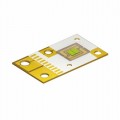 2013-12-18
2013-12-18
Osram Opto Semiconductors is now launching two new high-power versions of the Osram Ostar Projection for projectors with a brightness of up to 1700 lumen. Thanks to their optimized product design they offer very high luminous flux from the available chip surface. Between 1000 and 8300 lumen can be produced depending on the color and the LED version. An antireflex coated glass cover instead of the usual lens, together with external optics, ensures that the light is very well bundled. The new LEDs are therefore ideally matched to the efficient lighting from various additional optics.
Continue reading →
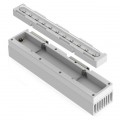 2013-12-18
2013-12-18
Journée Lighting, designer and manufacturer of LED lighting fixtures announces that it has received its 46th issued patent; Journée’s intellectual property portfolio continues to rapidly expand with the introduction of their patented Snap-Lock™ LED Driver Cartridge and Field-Replaceable Linear LED Modules.
Continue reading →
 2013-12-12
2013-12-12
Xicato announced that it has expanded its Vibrant Series offerings to include both a 1300 lumen and 2000 lumen option alongside its 3000 lumen module. Introduced in July, the Vibrant Series has been quickly adopted by designers, merchandisers and brand managers to support their efforts to differentiate and create compelling experiences for customers.
Continue reading →
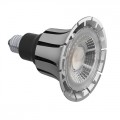 2013-12-12
2013-12-12
Ledzworld announced a new LED lamp that makes traditional ceramic metal halide (CMH) bulbs a thing of the past. The perfect choice to replace outdated and inefficient CMH bulbs, Ledzworld’s Platinum LED PAR38 lamp is the industry’s first 2000 lumen, single source LED lamp without active cooling.
Continue reading →
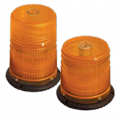 2013-12-12
2013-12-12
Checkers Industrial Safety Products announced the immediate availability of their new AID LIGHTS™ LED2250 Class I Beacons. With an ultra efficient power supply, these high intensity beacons produce more flashes per minute with less power draw, which minimizes maintenance and replacement costs. AID LIGHTS™ LED2250 Beacons quickly alert people of upcoming hazards to create a safer work environment for traffic safety, construction, mining, utilities, or in other hazardous or emergency areas.
Continue reading →
 2013-12-09
2013-12-09
Inspired by a classic holiday poem, “Twas the Night Before Christmas,” this year’s National Christmas Tree on display in front of the White House will feature GE’s new, energy smart® Sugar Plum light-emitting diode (LED) holiday lighting.
Continue reading →
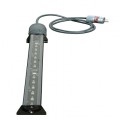 2013-12-09
2013-12-09
Larson Electronics has revealed their new low profile LED lighting fixture for hazardous locations. The HAL-24-16W-LED-1227 is designed to provide a high output and ruggedly durable hazardous area lighting solution for applications where Class 1 Division 2 compliance is required.
Continue reading →
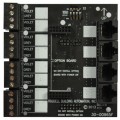 2013-12-09
2013-12-09
Hubbell Lighting announced its latest energy-saving dimming controls solution—Hubbell Building Automation's new CX Dimming Option Card. Now, any of Hubbell Building Automation's popular, low-cost CX Lighting Control Panels are fully dimmable.
Continue reading →
 2014-01-07
2014-01-07
 2014-01-02
2014-01-02
 2014-01-02
2014-01-02
 2013-12-31
2013-12-31
 2013-12-25
2013-12-25
 2013-12-23
2013-12-23
 2013-12-23
2013-12-23
 2013-12-20
2013-12-20
 2013-12-18
2013-12-18
 2013-12-18
2013-12-18
 2013-12-18
2013-12-18
 2013-12-18
2013-12-18
 2013-12-12
2013-12-12
 2013-12-12
2013-12-12
 2013-12-12
2013-12-12
 2013-12-09
2013-12-09
 2013-12-09
2013-12-09
 2013-12-09
2013-12-09